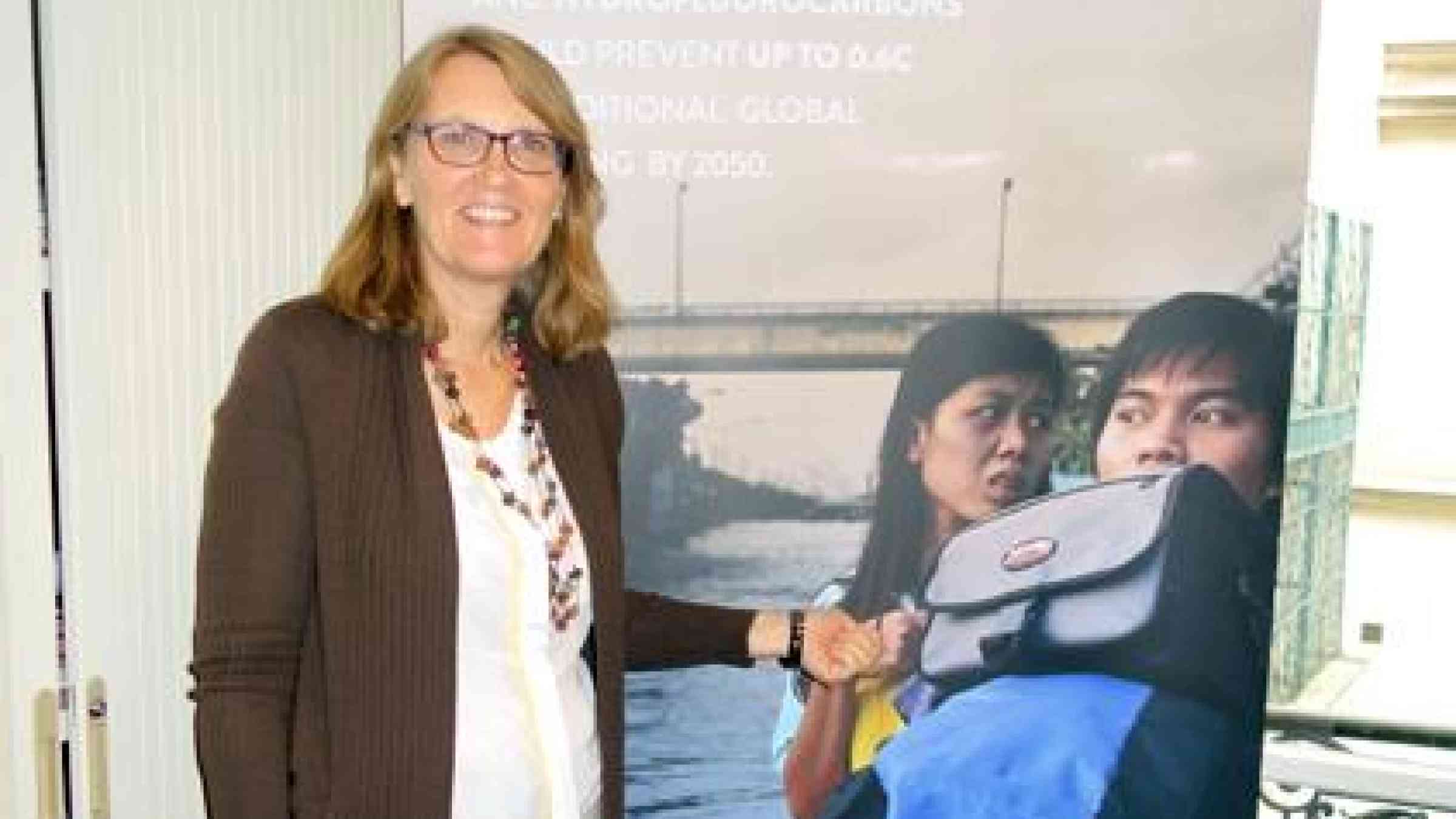Looking for a clean air revolution

PARIS, 23 June 2015 - When it comes to quick wins on reducing deaths from man-made hazards, improving the quality of the air that we breathe would be a good start.
According to UNEP, not only could it save up to 2.5 million lives annually, it would also help to reduce crop losses and curb climate change by around .6°C. It can also lead to less disruption of the monsoon seasons and slower melting of the glaciers. Win-win!
Helena Molin Valdes who launched UNISDR’s Making Cities Resilient Campaign, is now heading up the Climate and Clean Air Coalition (CCAC), a global effort to push for climate protection and clean air benefits that will help deliver the targets in the Sendai Framework for Disaster Risk Reduction. The Paris-based secretariat is hosted by UNEP.
CCAC aims to do this by eliminating from the atmosphere short-lived climate pollutants (SLCPs) such as soot or black carbon (BC), methane (CH₄), tropospheric ozone (O₃) and many hydrofluorocarbons (HFCs).
Ms. Molin Valdes said: “The most striking thing about SLCPs is that they contribute to so many early deaths particularly among women and girls who suffer most from indoor pollution which claims 3.5 million lives every year mainly from inefficient home cooking and heating devices. There are another 3.2 million premature deaths from outdoor pollution.
“Have you ever noticed how roadside crops are smaller than normal? That’s another effect of air pollution. It affects the health and productivity of crops reducing their ability to absorb CO₂, altering their growth and variety. If we make serious progress in eliminating these pollutants we can cut global crop losses by around 30 million tonnes a year and reduce climate change by .6°C.”
The distribution of the SLCP challenge is interesting: 80% of premature deaths from pollution occur in Asia and the Pacific while 52% of the crop losses from four major staples occur in North America and Europe but no region of the world is unaffected.
In the polar regions and other parts of the world under snow cover, black carbon, which only stays a few days in the atmosphere, increases the absorption of sunlight and exacerbates melting. With all development roads now leading to Paris, COP21 and the promise of a new agreement on climate change in December, the role SLCPs play in global warming should not be overlooked.
Ms. Molin Valdes said: “The world needs a robust new climate agreement with deep cuts in CO₂ emissions but CO₂ has a long lifetime and it will be some time before we start to feel the benefits of such an agreement. But we know that by taking immediate action on SLCPs we can get tangible results very quickly especially in preventing deaths from pollution, and reducing near-term climate change and mitigating extreme weather events. So it is a needed complementary strategy to CO2 reductions.”
Methane stays in the atmosphere for 12 years and is responsible for half of the observed rise in O₃ levels, a powerful greenhouse gas responsible for 150,000 deaths annually. Everyone is familiar with the sight of flaring oil wells which needlessly produce much of it. It also comes from coal mining, gas production and inefficient farming practices.
Partner-led initiatives are leading to action particularly the Oil and Gas Methane Partnership which has attracted some big industry names. The Agriculture Initiative has developed a manure management framework and a Global Open Burning Mapping tool to track and tackle pollution linked to burning of vegetable waste. After three years in existence, the CCAC has launched 11 such initiatives looking at waste, clean cooking, brick kiln design, heavy-duty diesel, commercial refrigeration (HFCs) and urban health.
One interesting initiative is the push to replace HFCs of high global warming potential with less harmful alternatives. HFCs are powerful factory made gases used in air conditioning, refrigeration and aerosols which replaced ozone depleting substances that are being phased out. They have an average atmospheric life of 15 years and are among the fastest growing greenhouse gases in the USA, China, India and the European Union.
Governments and other partners are responding. Nigeria is moving towards a gas flaring prohibition. Morocco is replacing old vehicles. Canada is reducing air pollutants like black carbon from industrial and non-industrial sources. Norway is imposing requirements to extract landfill gas. Bangladesh is converting brick kilns to clean technologies.
With the help of CCAC, Bangladesh, Chile, Colombia, Cote D’Ivoire, Ethiopia, Ghana, Jordan, Liberia, Maldives, Mexico, Morocco, Nigeria, Peru and Togo are setting up SLCP units that will work across government ministries to coordinate and enhance mitigation actions.